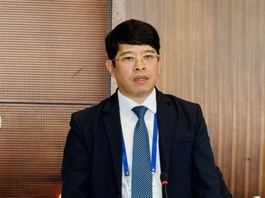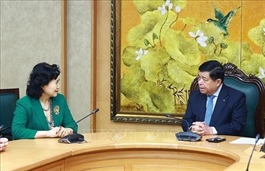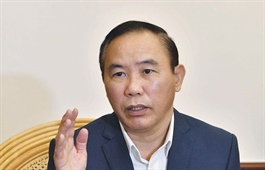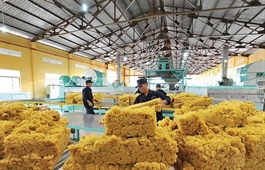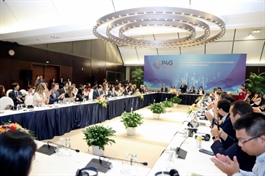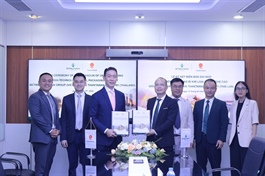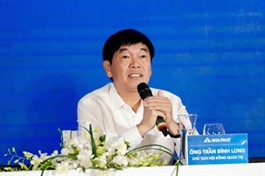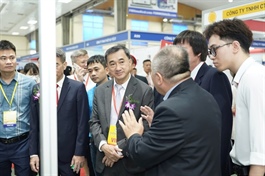US tariffs prompt Việt Nam’s supply chain shift
US tariffs prompt Việt Nam’s supply chain shift
The seminar titled ‘US Countervailing Tariffs and Việt Nam’s Corporate Response’, organised by the Việt Nam Chamber of Commerce and Industry (VCCI) on the morning of April 18, attracted significant attention and participation from economic experts and the business community.

The conference “US Countervailing Tariffs and Việt Nam’s Corporate Response” — VNS Photo Tiến Đạt |
The United States’ proposal to impose retaliatory tariffs of up to 46 per cent on imports from Việt Nam presents significant challenges to the country’s economy. However, it also marks a pivotal moment for Việt Nam to reassess its development strategy, restructure supply chains, and strengthen the resilience of domestic enterprises amid increasing global volatility.
This was the central message conveyed by experts and business leaders at the conference “US Countervailing Tariffs and Việt Nam’s Corporate Response” organised by the Việt Nam Chamber of Commerce and Industry (VCCI) in Hà Nội on April 18.
Speaking at the opening session, VCCI Chairman Phạm Tấn Công stressed that US President Donald Trump’s executive order proposing new tariffs on goods from more than 180 economies, including Việt Nam, which faces a rate as high as 46 per cent, had triggered a “global trade shock,” marking a new era of unilateral protectionism and heightened uncertainty in global tariff regimes.
According to Công, the US accounted for nearly 30 per cent of Việt Nam’s total export turnover in 2024, with key export sectors such as electronics, textiles, footwear, wood products, seafood, and machinery.
“If the proposed tariffs are implemented, Vietnamese enterprises would face severe repercussions, including loss of market share, reduced competitiveness, production disruptions, job losses, and broader implications for social welfare and national economic growth,” Công warned.
However, Công also underscored that “within crisis lies opportunity.” He argued that this is the time for Việt Nam to review its development approach, enhance domestic capacities, embrace adaptability, and reassert its role in global supply chains.
Cấn Văn Lực, Chief Economist at BIDV, echoed this sentiment. He emphasised that while the proposed tariffs pose serious threats, they also highlight opportunities for Việt Nam to diversify markets and partners, realign supply chains, and adopt sustainable and circular business models that enhance long-term resilience.
Lực pointed out that, under a scenario where the US imposes a 20–25 per cent tariff, the added cost to Vietnamese businesses could reach up to US$55 billion per year. In contrast, if Việt Nam were to lower its own tariffs on US imports to zero, the estimated loss in tax revenue would be just around $1.2 billion.
“This illustrates the importance of strategic trade balancing, proactive negotiations, and barrier removal to ensure a sustainable bilateral trade relationship,” Lực noted.
In response to the evolving landscape, Công presented five key recommendations. First, Việt Nam should strengthen high-level strategic dialogue with the US and increase imports of key American goods such as LNG, agricultural products, and high-tech equipment to narrow the trade deficit. Second, Việt Nam must diversify its export markets by making fuller use of next-generation free trade agreements (FTAs) such as the EVFTA, CPTPP, and RCEP.
Third, restructuring domestic supply chains and increasing localisation rates, especially in foundational industries, will be critical. Fourth, Vietnamese enterprises should actively join strategic US supply chains in areas such as semiconductors, renewable energy, and green industries. Lastly, institutional and infrastructural capacities—such as logistics systems and skilled labour—must be upgraded to meet new demands.

The conference “US Countervailing Tariffs and Việt Nam’s Corporate Response” — VNS Photo Tiến Đạt |
Đậu Anh Tuấn, Head of Legal Affairs and Deputy Secretary General of VCCI, further emphasised that Vietnamese businesses must become more proactive in tracking international policy shifts, adjusting export structures, ensuring transparency in origin, and fully leveraging Việt Nam’s 17 FTAs.
“Currently, Việt Nam is tapping into only around 31 per cent of the potential offered by these agreements, which means there is still substantial room for improvement,” Tuấn said.
Tuấn also highlighted the importance of not overlooking the domestic market, “With a population of 100 million and a growing middle class, Việt Nam’s domestic market represents an increasingly attractive growth driver—one not readily found in many other developing economies.”
Several business representatives at the event urged the Government and industry associations to support enterprises in accessing green finance. This is becoming an increasingly important standard for international partners and can help Vietnamese firms secure export contracts aligned with sustainable development goals.
Lực concluded on an optimistic note: “This year marks a critical turning point for Việt Nam. We are in a period of aggressive reform, and it’s time to adopt a forward-looking mindset—no retreat, only progress. Vietnamese people have always proven their resilience and strength in times of hardship.”
As Việt Nam deepens its integration into the global economy and faces external shocks with greater frequency, its ability to respond proactively, build internal capacity, and maintain a spirit of determination will be essential to overcoming present challenges and achieving the goal of becoming a high-income nation by 2045.
- 21:06 18/04/2025



